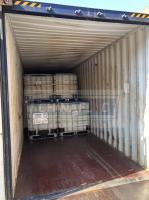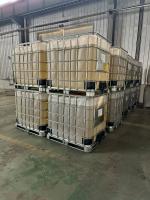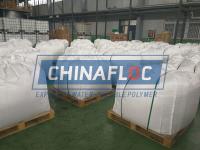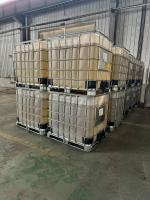Our Products
Product Center / polyamine(FL3240 FL3150 FL3050)used for water treatment and mineral processing

polyamine(FL3240 FL3150 FL3050)used for water treatment and mineral processing
Function of Polyamine in Water Treatment and Mineral Processing
Polyamines, which are a group of synthetic or naturally occurring cationic polymers, are widely used in water treatment and mineral processing due to their unique chemical properties. These properties, such as their positive charge, allow polyamines to interact with negatively charged particles, making them invaluable in various industrial applications. Below is a detailed examination of the role polyamines play in both water treatment and mineral processing, with an emphasis on their functions in coagulation, flocculation, separation, and dewatering.
1. Function of Polyamine in Water Treatment
In water treatment, polyamines are primarily used as coagulants and flocculants. These two roles are essential in removing suspended solids, organic matter, colloidal particles, and various pollutants from water, especially in municipal, industrial, and wastewater treatment systems.
Coagulation and Flocculation
Polyamines are highly effective as coagulants and flocculants. Both of these processes are crucial in water treatment to remove suspended particles and make water safe for drinking or discharge.
-
Coagulation: Coagulation is the process by which polyamines neutralize the negative charges on particles and colloids suspended in water. Normally, colloidal particles carry a negative charge, which prevents them from aggregating and settling out of the water. Polyamines, which are cationic in nature, work by neutralizing these negative charges, causing the particles to lose their repulsion for one another. As a result, the particles aggregate and form larger, easier-to-remove flocs. Polyamines are especially effective in water containing fine, negatively charged particles, such as organic matter, dissolved metals, or clay.
-
Flocculation: Once coagulation has occurred, the next step is flocculation, where the small aggregates or particles that have formed are encouraged to come together into larger, more settleable flocs. Polyamines play a significant role in flocculation by bridging these particles together. This process is facilitated because polyamines possess multiple active sites that can attach to different particles, resulting in larger clusters. This makes it easier for the flocs to settle out during sedimentation or be removed through filtration.
Polyamines are particularly effective in municipal wastewater treatment, where they help remove a wide variety of pollutants, including organic matter, suspended solids, and microorganisms. Polyamines can also assist in drinking water treatment, ensuring that harmful microorganisms and pollutants are adequately removed, thus providing clean water for consumption.
Dewatering of Sludge
The dewatering of sludge is another important aspect of water treatment where polyamines are utilized. After water treatment processes like coagulation and flocculation, the remaining material is often in the form of a slurry or sludge, which still contains a significant amount of water. Polyamines are used to help remove excess water from this sludge by promoting the aggregation of particles and reducing the moisture content.
By improving the dewatering process, polyamines reduce the volume of sludge that needs to be disposed of, thus lowering disposal costs and making it easier to handle. In some wastewater treatment plants, polyamines are specifically used as sludge conditioning agents, improving the efficiency of mechanical dewatering methods such as centrifugation, filtration, and pressurization.
Removal of Organic Contaminants
Polyamines are also used in water treatment for the removal of organic contaminants. Their cationic nature allows them to interact with organic molecules, such as oils, greases, and certain dissolved organic compounds, which are typically negatively charged. Polyamines can bind to these organic particles, agglomerating them and making them easier to remove from water.
This application is particularly useful in industrial wastewater treatment, where water streams are often contaminated with organic pollutants from manufacturing processes, food production, or chemical industries.
2. Function of Polyamine in Mineral Processing
Polyamines also play an essential role in mineral processing, particularly in processes like flotation, separation, flocculation, and tailings management. These processes are crucial in the extraction of valuable minerals from ores and in the treatment of waste materials.
Flotation of Minerals
Polyamines are used as collector agents in flotation, a key method in mineral processing for separating valuable minerals from gangue (waste) material. In flotation, the objective is to selectively attach valuable mineral particles to air bubbles, which float to the surface and can then be skimmed off, leaving unwanted materials behind.
-
Collector Role: Polyamines, due to their cationic properties, can selectively adsorb onto the surfaces of certain minerals, making them more hydrophobic (water-repellent). This enhanced hydrophobicity allows the mineral particles to better attach to air bubbles and rise to the surface during flotation. The positive charge of polyamines ensures that they interact preferentially with the negative charge found on the surface of minerals like silicates, carbonates, and oxides.
-
Selectivity and Efficiency: Polyamines are especially useful for flotation processes involving finely ground or finely disseminated ores, where other collectors might not be as effective. Their ability to selectively adsorb onto the surface of specific minerals helps increase the recovery rate of valuable minerals while reducing the flotation of unwanted gangue material.
In some cases, polyamines can be tailored to interact with specific minerals, improving the selectivity and efficiency of the flotation process. This is particularly important in complex ores where multiple minerals are present, and a high level of selectivity is required to ensure the separation of valuable minerals from the waste.
Flocculation and Tailings Management
Polyamines also serve a crucial function in flocculation during the processing of mineral tailings. After the flotation process, the remaining material is typically a slurry of fine particles that are difficult to manage. Polyamines help aggregate these fine particles into larger flocs, making it easier to separate the solids from the liquid.
-
Tailings Dewatering: The aggregation of fine particles into flocs facilitates better settling of the particles, allowing the water to be recovered and reused in the processing plant. Polyamines are particularly useful in this process because they can form stable flocs that settle rapidly, which enhances the efficiency of tailings dewatering systems and reduces the volume of water that needs to be disposed of or treated.
-
Environmental Impact: By improving tailings management, polyamines contribute to environmental sustainability in mineral processing. Efficient dewatering of tailings reduces the volume of waste material and water that needs to be stored, minimizing the risk of contamination in nearby ecosystems. Polyamines help to ensure that tailings can be stored safely in tailings ponds or other containment systems, reducing the risk of leakage or environmental damage.
Separation of Minerals
Polyamines can also be used in the separation of minerals during processing. In certain cases, they can alter the surface properties of minerals, making them more amenable to specific separation techniques such as gravity separation, magnetic separation, or electrostatic separation. Polyamines help in enhancing the separation efficiency of minerals, ensuring a higher purity of the final concentrate and improving the overall recovery of valuable minerals.
For example, polyamines can aid in the separation of silicate minerals from metallic ores by modifying the surface charge, making it easier for the ore to be separated through processes like flotation or gravity separation.





